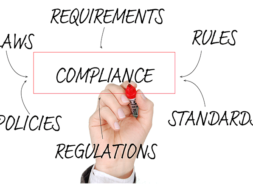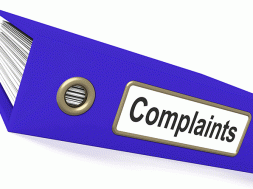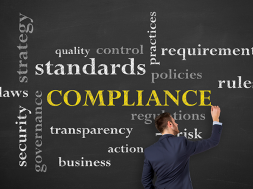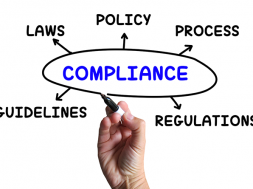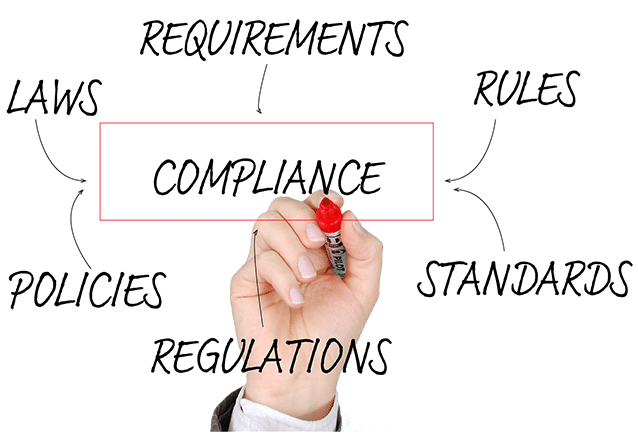
Snapback: Is Your Compliance Program Ready
By Bill Ojile, Partner, Armstrong Teasdale LLP
Introduction
“Those who cannot remember the past are condemned to repeat it.” – George Santayana
From 2009-2016, an unprecedented level of regulatory, legislative and enforcement activity was directed at the private career college sector. Coordinated efforts among the United States Department of Education (ED), Congress, other federal agencies, state attorneys general (AGs), plaintiffs’ lawyers and the media painted the sector in a negative light, and schools big and small were indiscriminately targeted with lawsuits and regulatory enforcement actions. On a seemingly daily basis, a negative story was published or aired highlighting the supposed abuses of the career college sector. It was relentless, biased and ugly. Ultimately, enrollments plunged and schools failed.
The purpose of this article is not to induce depression or a recurrence of nightmares.
One of the big lessons from this period was that schools were constantly playing catch-up trying to adjust their policies and practices on the fly to adapt to ever-changing rules and advocacy positions from the other side.
By reminding you of the playbook used against the sector starting in 2009, your school does not have to be reactive and get caught unprepared. You have six months to create and execute your compliance game plan. This article will make commonsense recommendations that your school can implement now in order to prepare your compliance infrastructure for a potential increase in regulatory and enforcement activity in 2021.
Historic overview: 2009-2012
The onslaught started with prolific activity from ED. Over a period of 18 months starting in early 2009, ED commenced several negotiated rulemaking proceedings and promulgated a series of proposed rules to change current regulations and roll back Bush era guidance. The speed at which ED commenced the rulemaking proceedings suggested planning and coordination predating the transition of administrations. The changes ED made were significant and far-reaching, including expanding the information that institutions must make available to prospective and enrolled students, prohibiting incentive compensation payments to admissions and financial aid personnel, requiring state authorization of online programs, modifying the misrepresentation rule and developing gainful employment regulations. These rule changes were predicated on policy conclusions that additional protections were needed for private career college students.
Also starting in 2009, enforcement actions from AGs ramped up. AGs were given seats at the table in the ED-negotiated rulemaking proceedings, where they fueled the negative narrative against career colleges with anecdotal and usually one-sided information from complaints filed with their offices. They also launched investigations of career schools in a number of states, including California, Colorado, Florida, Illinois, Iowa, Kentucky, Massachusetts, Minnesota and New York. A majority of AGs participated in working groups dedicated to for-profit colleges, and multi-state investigations were launched against the larger, publicly-traded institutions.
Complaints and information from AG investigations were fed to ED, the HELP Committee and other law enforcement agencies, such as the Consumer Financial Protection Bureau.
In parallel with the ED proceedings, between June 2010 and July 2012, Senate HELP Committee Chairman Tom Harkin conducted six committee hearings focusing exclusively on career colleges. His investigation included the Government Accountability Office (GAO) sending personnel posing as prospective students to several career colleges and preparing a report of its findings that was presented to the HELP Committee. His investigation culminated in a 184-page report published by the Committee’s Majority Staff, which included “profiles” of 30 “for-profit education companies.” Critics of the career college sector continue today to cite many of the issues identified and recommendations made in the HELP Majority Report, including:
- the percentage of revenues spent on instruction versus marketing and recruiting, profit distributions and executive compensation;
- comparisons of the number of admissions staff members versus other staff and faculty;
- schools’ share of funding from military educational benefit programs;
- the resources devoted to default management;
- school-sponsored loan or scholarship programs; and
- the use of lead generators.
There was also significant activity from plaintiffs’ attorneys who were advertising for students to bring forward issues, such as problems with private student loans and employment outcomes. While schools with arbitration agreements were effective in stopping mass and class action cases, schools involved in these lawsuits were damaged by two collateral issues. First, plaintiffs’ lawyers connected claimants/litigants in these matters with reporters, and those contacts contributed to the steady stream of negative press against the sector. Second, they identified students and school employees, and those individuals provided the AGs, HELP Committee and other law enforcement agencies with a ready source of negative witnesses and documents.
This was a simultaneous, and not an incremental, attack; targeted schools experienced hurricane-force winds blowing in all directions. The enforcement actions often looked back a number of years, and ED, AGs and regulators applied current rules (or in some cases current advocacy on rules not yet adopted) against past conduct, characterizing as “predatory” conduct that in many cases was compliant with the regulatory guidance that existed at the time. And as schools attempted to adjust to conform to evolving best practices, no one noticed. No matter what prospective process and compliance reforms were made by schools, policymakers, regulators and the media continued to focus only on prior conduct.
The current environment
Ultimately, a number of schools closed, among them some of the country’s largest school groups. Enforcement activity continued, but it was largely off the front pages. Starting in 2017, ED began to roll back some of the most controversial and punitive rules adopted by the prior administration including Gainful Employment and Borrow Defense to Repayment rules.
Despite the relative calmness of the past three years as compared to the previous eight, many of the forces that aligned against the career college sector have continued their negative agendas.
For instance, in 2019 Sen. Richard Durbin (D-IL) proposed broad-ranging legislation entitled ‘‘Preventing Risky Operations from Threatening the Education and Career Trajectories [PROTECT] of Students Act of 2019.’’ The proposed legislation codified a number of the 2012 HELP Committee Majority Staff recommendations, ED’s 2014 Gainful Employment and 2016 Borrow Defense to Repayment rules, re-instituted 85/15 and created various new oversight committees, warning lists and a new ED enforcement division. While the proposed legislation did not gain traction in the Republican controlled Senate, it is significant because it demonstrates there remains a constituency for the 2012 HELP Committee Majority Report’s findings and the point of view that the career college sector requires a draconian level of new or additional regulation.
In another more recent example, Sen. Durbin, along with Sens. Elizabeth Warren (D-MA), Sherrod Brown (D-OH) and Richard Blumenthal (D-CT), sent a letter to ED requesting clarification on whether it will allow career colleges to be eligible for funding in the Coronavirus Aid, Relief, and Economic Security (CARES) Act, and if so, proposing a number of conditions only on career colleges’ use of the funding. The recommended conditions included:
- requiring 100% of the funding to be used for student instruction, emergency financial aid to students, and student support services central to the educational mission;
- a ban on using funds for executive compensation and a requirement that career colleges freeze executive compensation;
- a ban on using funds for advertising, marketing or recruitment purposes;
- requiring CARES Act funding included as federal funding for purposes of 90/10 compliance; and
- requiring a specific report to Congress only on how career colleges used CARES Act funding.
Even in the face of a national pandemic crisis, these legislators singled out career colleges for increased scrutiny.
Recommendations: What can schools learn from the past?
Schools need to prepare now for the possibility of regulatory change in 2021 based on the potential for a change of administration and/or Democrats taking control of the Senate. They must have the mindset that their practices are under a microscope and that no school is immune from scrutiny. “This is the way we’ve always done it” will not work and will lead to bad outcomes for any school espousing this perspective.
Start with a comprehensive and introspective top-to-bottom review of your school, understand where improvements or additions are necessary, and make necessary policy and process changes.
An investment in compliance initiatives will pay future dividends because an effective compliance program can limit potential liability. Being able to show the development and use of self-regulatory processes to monitor adherence to applicable statutes, regulations and internal policies is beneficial for external audiences.
Implementing the following compliance steps will help your school get, and stay, ahead of the game:
1. Mystery shopping
“Mystery shopping” is sending someone into your school (physically or by phone) who pretends to be interested in enrolling, but whose job is to assess the admissions process and the representative’s adherence to your admissions policies. A well-planned mystery shopping program can provide a school with compliance insights in an area of vulnerability. Alleged false or inaccurate statements made during the admissions process about issues such as placement rates, graduate salaries, transfer of credits, tuition cost, accreditation, licensure exam success rates and financial aid eligibility are significant sources of potential liability. The mystery shopper will complete a report on the admissions interview and assess the admissions representative against the school’s admissions policies and expectations.
The report is an important tool, but the school needs to set up a process to analyze and act on the mystery shopping findings. The school should create a written policy describing the objectives of its mystery shopping program and how the results will be communicated, reviewed and acted upon. Also, a cross-functional team (including operations, admissions, HR and regulatory or compliance representatives) should be tasked with the responsibility to review each mystery shop report and to implement any required employee discipline, policy changes, or campus or system training required by the issues identified in the report.
Schools can demonstrate an effective self-regulatory process by showing a track record of timely and proactive action upon issues learned through mystery shopping. On the other hand, a school is better off not mystery shopping at all if it does not have a process to act on the mystery shopping report outcomes. A school will be hurt in any investigation or enforcement action where mystery shops show problems that the school has failed to address or remediate in a timely manner, particularly with respect to employee issues.
2. Training
Schools should conduct a thorough review of all training materials and techniques, and determine whether they are in step with the current regulatory and policy environment. Ask yourself this question: if there was a news story about how your school trains employees, would you be happy or sad with how it presents your school? If the answer is that you would be sad, it is time to update how you train employees to do their jobs.
In the current environment, training should focus on transparency.
Make sure that your admissions and financial aid employees understand what they can and cannot tell prospective students and why. Train your employees to answer student questions in a direct fashion, and provide these front-line employees with current and accurate information with which to answer prospective student questions. Train your employees to point prospective students to the school’s website as a resource they can use to find information on the school and confirm what they learn in the admissions and financial aid process. Conduct a robust new student orientation, and identify and answer common student misconceptions.
The school should publish its employee policies, including its code of conduct, and train on the school’s expectations. Again, make sure employees understand the regulatory environment and why the reputation of the school and their jobs depend on adherence to the school’s compliance policies. Empower employees to report policy violations they see and create processes for them to do so anonymously.
3. Career services
One of the regulatory changes implemented by ED in 2010 was a requirement that any institution participating in the Title IV programs is required to make available to enrolled or prospective students information concerning the placement of, and types of employment obtained by, degree or certificate program graduates. An institution is required to disclose any placement rate it calculates, and if an institution advertises job placement rates as a means of attracting students to enroll in the institution, it must make available the most recent data available concerning employment statistics.
Most nationally accredited schools are required to calculate and report placement statistics to their accrediting bodies, and some state laws or regulations require schools to provide prospective students with placement statistics for their program of interest. AGs, regulators and plaintiffs’ lawyers have laser focused on placement statistics because if they can demonstrate the statistics provided to prospective students or advertised by the school are materially inaccurate, they will have a tailor-made misrepresentation claim against the school. Therefore, all schools need to devote significant management time to ensure that the school has properly calculated and can support its placement statistics.
Any school operating under such accreditor or state requirements should create career services guidelines to define a consistent process for determining what constitutes a placement.
The school should publish uniform requirements for the types of documents that a campus must maintain in a student’s file to support a placement, including ensuring all placement documents requiring student signature have been signed. The guidelines will create rules and requirements that your school can audit against and will allow an internal and external review of placement decisions. The guidelines can address issues such as:
- How long must student employment last to count as placed?
- What documentation is required to support a placement?
- Why a graduate is unavailable for employment and supporting evidence?
- When can you count temporary or contract work as a placement?
- What must a graduate demonstrate to show legitimate self-employment?
The guidelines will define a specified methodology for determining a placement and a hierarchy for review of placement decisions at the campus level up to the campus president or director. If your school has more than one campus, the review hierarchy should include a central administrative employee external to the campus, such as someone who has regulatory or compliance responsibilities. This will help to ensure system-wide consistency. If one of the reviewers finds documentation or support deficient, the placement file is sent back for additional work to remediate the deficiency, if possible, before the student is counted as placed.
4. Review of website and key documents
All schools should conduct a regular review of their website, catalog, enrollment agreement, marketing collateral and disclosures. These documents can be considered advertising (website, marketing collateral), contracts (enrollment agreements) or both (catalog, disclosures). Given the evolving nature of best practices in higher education, what was in compliance two years ago may not be compliant today.
Reviews can serve several purposes. First, and most importantly, the school can assess and fix anything out of step with current regulatory or accreditation requirements. Second, the review can identify areas for clarification, modification or additional support. Third, such reviews can identify additions or changes that will improve the ability of the school to demonstrate the prospective student or student was fully advised or had accurate information available. Anticipating and fixing areas of regulatory scrutiny or potential student confusion can assist in greatly reducing the school’s exposure and potential liability.
5. Document retention policy
Every school should have a written document retention policy. The purpose of a document retention policy is to establish and document a company’s standards for records management and its commitment to the protection of valuable records. The policy allows a company to prepare, use and maintain complete and accurate records, both to comply with known legal requirements and to meet business requirements. A proper document retention policy will help a company ensure that it retains records long enough to meet applicable business and legal requirements. But it will also manage the disposal of records routinely and non-selectively at the appropriate time in the normal course of business. Importantly the policy must contain a process for suspending that routine disposal when necessary to meet legal requirements.1
A document retention policy will apply to all company records, regardless of format, whether in paper, electronic, video, hard disk drives, CDs, email or any other form of storage media.
This includes information, including email and other documents, materials or communications stored on a device, the cloud or other media. Records include all incoming and outgoing documents, as well as all drafts, notes, calendars and similar items.
Federal and state law and regulation prescribe retention periods for a school’s business records, such as for example Title IV regulations for financial aid records, federal and state law for tax and related financial records, and federal and state law and accreditation standards for some student records. But a school may decide the periods of time it maintains all other business records not subject to statutory or regulatory retention periods, such as emails, drafts of documents, recordings/videos of admissions or financial aid interviews, training materials or policies, student academic, admissions, financial aid and other file materials that a school is not required to maintain.
The failure to follow a document retention plan can have a devastating impact on a school involved in litigation or a government investigation. The first thing that a school will receive in litigation or an investigation is an extensive demand for the school to produce documents. Sometimes, especially in a government investigation, the relevant time period for the requested documents will go back many years. The costs to collect, review, manage and produce documents in response to such demands can get very expensive, and these costs are proportionate to the volume of responsive documents collected and produced.
A school that does not have a document retention policy or that fails to follow its document retention policy can face disastrous consequences in litigation or an investigation. This is because the school likely will produce records it otherwise would not have produced had it followed a document retention policy. But won’t following a document retention policy also dispose of helpful documents? Possibly, but the likelihood that unhelpful documents will get produced and used against the school is far greater.
A school that has a document retention policy and is not involved in any actual or threatened legal proceeding requiring a Legal Hold should ensure over the next few months that document disposal per its policy occurs in the ordinary course of business. Any school that does not have a document retention policy still has time to implement one.
6. Insurance
Most insurance policies are “claims made,” meaning that the policy in place when the claim arises (e.g., a lawsuit is filed) is the policy that will cover the claim, even if the conduct at issue in the claim (e.g., a student’s enrollment) occurred at an earlier time. Therefore, a school has time to check its insurance coverage and determine whether it has adequate coverage that will apply to potential future student lawsuits and government investigations and resulting litigation. Your school should make sure to work with an insurance broker with specific higher education experience because the typical Directors and Officers (D&O) insurance policy may not cover the types of risks faced by a private career college.
Conclusion
If history repeats itself, changes of administration and/or control of the Senate portend a period of intense scrutiny for career colleges. When this happened in 2009, many schools were caught looking in the wrong direction. But schools now have the opportunity to prepare for the onslaught with 2009-2012 as their guide. All schools should use the remaining time to scrutinize their compliance infrastructure and make necessary changes. There is no time like the present.
Resources
- The most important exception in a document retention policy relates to pending or threatened disputes, claims or investigations. If a dispute, claim, investigation or other similar triggering event arises (for example, a lawsuit or arbitration is filed against the school, or a governmental entity makes an inquiry or request for information), or if it is reasonably foreseeable that such a dispute, claim, investigation or other triggering event will arise, a school must suspend the scheduled disposal of relevant records and preserve them until the matter is resolved. Such a suspension of disposal is referred to as a “Legal Hold.”
BILL OJILE is a partner in the Denver office of Armstrong Teasdale LLP and a member of the firm’s Higher Education industry team. Bill has over 30 years of experience advising, counseling and trying cases on behalf of companies of all sizes, and he has particular experience working with the legal, administrative and policy issues of companies operating in highly regulated industries. Bill’s clients benefit from his 15 years of experience as a general counsel. Before joining Armstrong Teasdale, Bill served for almost six years as general counsel for a large, publicly-traded telecommunications company and for nine years as general counsel of a multi-campus private college. In both positions, he had responsibility for legal, regulatory, human resources, government affairs and compliance matters. This unique skill set allows Bill to understand the needs of businesses and to communicate practical legal advice to corporate leaders. Bill earned his BSBA degree, emphasis in accounting, from the University of Nebraska-Omaha and his law degree from the University of Nebraska-Lincoln College of Law.
Contact Information: Bill Ojile // Partner // Armstrong Teasdale LLP // 4643 S. Ulster, Suite 800 // Denver, CO 80237 // 303-575-4000 // bojile@atllp.com // www.atllp.com // https://www.linkedin.com/in/bojile/
